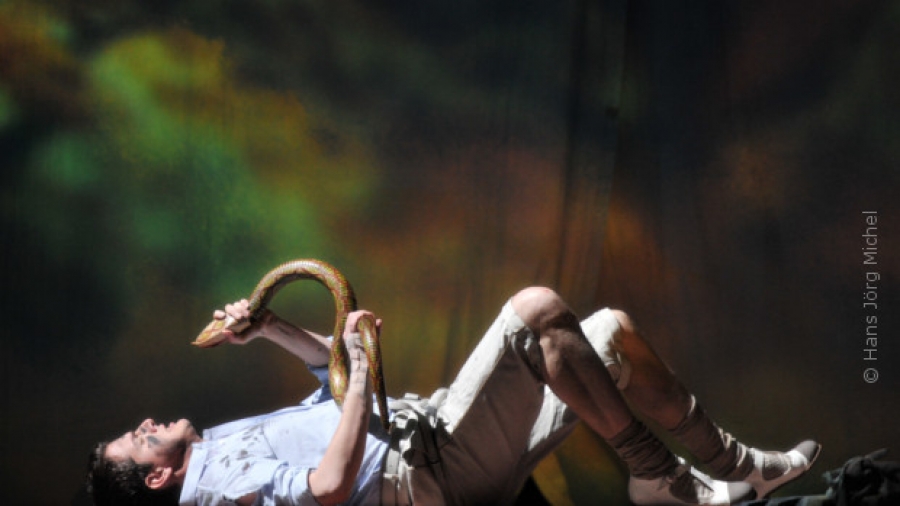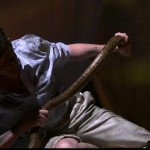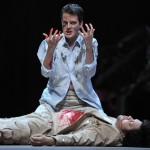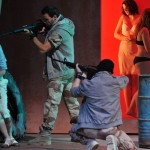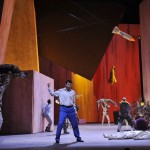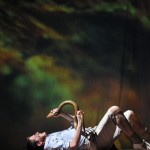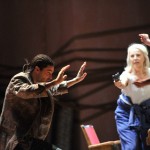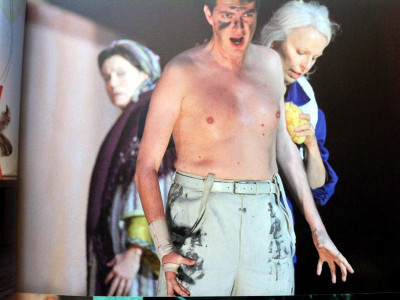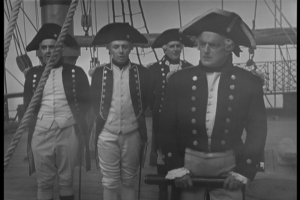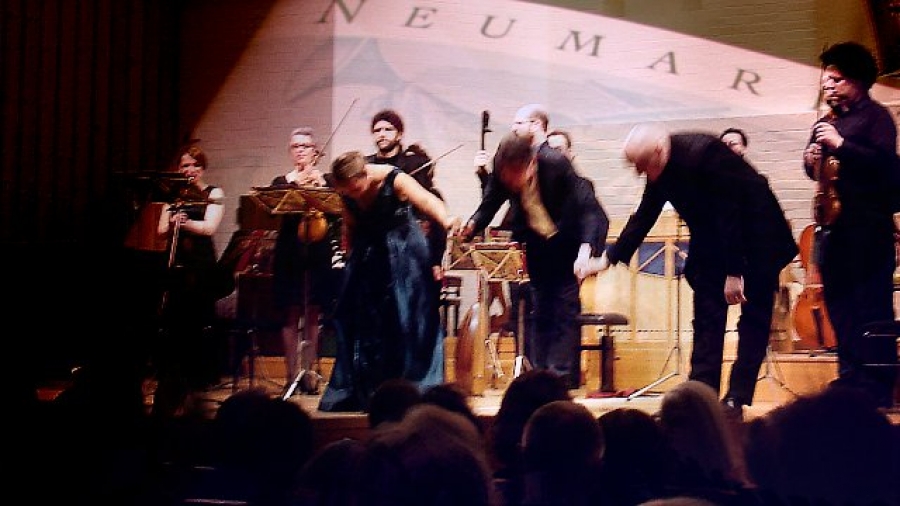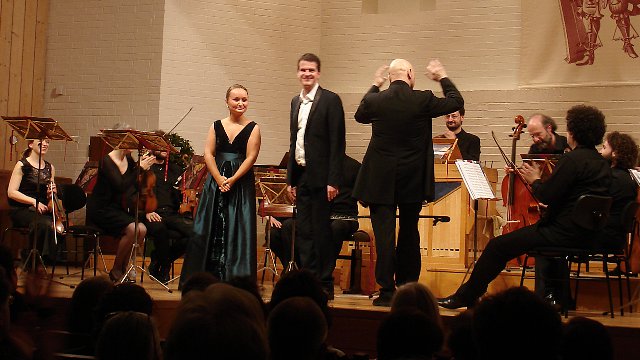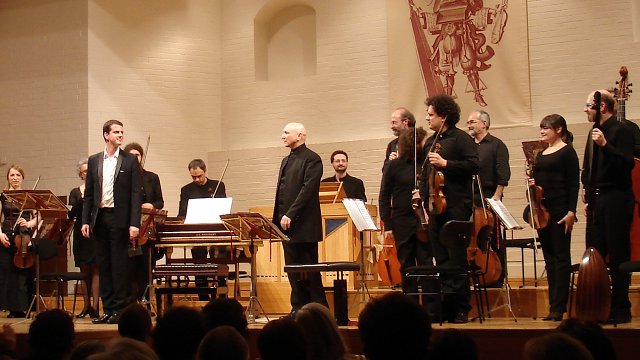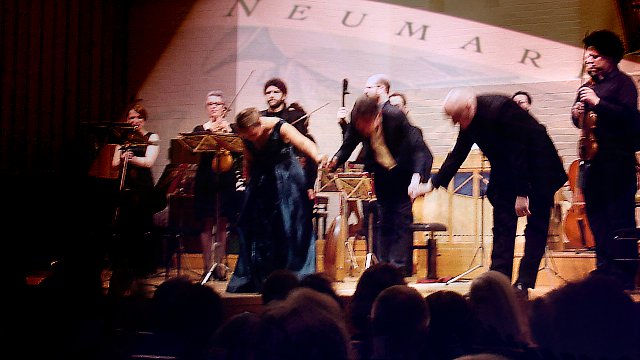This post could also have been titled “5 Reasons Why We Are Happy,” or similar. There are actually more than just five; the Salzburg production of Julius Caesar makes us happy on so many levels.
By now, the first official reviews are coming in, and the non-professionals I talked to, who were attending the première yesterday are still too flustered to utter any coherent sentences. Educated people lapse into chat-speak and utter “OMG!”s or keysmashes, vocal splendour and shirtlezzness have been mentioned. So, we will have to wait for the more personal reviews until the hormone levels and heart rates return to almost normal.
For those not totally at home with Classical music in general, or with Europe: The Salzburg Festival (Salzburger Festspiele) is something special. To sing there is as if to be knighted; it has about the same relevance as the Bayreuther Festspiele for Wagner singers; that PJ is performing there makes me more than just happy. Its an honour for the singer, and of course, the honour is mutual.
The production by Moshe Leiser and Patrice Caurier looks great, from what can be told from the pictures, and oh, those pictures!
Back to the Point:
5 Reasons To Be Happy
1. PJ
It’s obvious, isn’t it?
2. Georg Friedrich Händel
Do you know the opera yet? If not, read up on it a little. It is maybe the most famous of Händel’s operas on the whole, and for a reason, as it has got everything: Drama, utter hilarity, and of course, deep emotions.
G. F. HANDEL
Giulio Cesare in Egitto
Son nata a lagrimar
CORNELIA & SESTO
Son nata a lagrimar
Son nato a sospirar,
e il dolce mio conforto,
ah, sempre piangerò.
Se il fato ci tradì,
sereno e lieto dì
mai più sperar potrò.
Son nata…
*
I was born to weep
I was born to sigh,
And I shall mourn forever
My sweet consolation.
If fate has betrayed us,
I shall never again hope for
A serene or happy day.
I was born…
3. The Cast
There is nothing better than a great singer in great company: The orchestra is Il Giardino Armonico conducted by Giovanni Antonini; Andreas Scholl, Cecilia Bartoli, and Anne Sofie von Otter don’t need any further introduction. The cast mirrors the high standards; Salzburg casts are basically a “Who Is Who” of opera.
Just to state how great the other members of the Salzburg cast are, in case you didn’t know already — this is in appreciation of Christophe Dumaux, who is unjustly less known than the other artists mentioned.
Georg Friedrich Händel
Giulio Cesare in Egitto
L’empio, sleale, indegno!
TOLOMEO
L’empio, sleale, indegno
vorria rapirmi il regno,
e disturbar così
la pace mia.
Ma perda pur la vita,
prima che in me tradita
dall’avido suo cor
la fede sia!
For Jochen Kowalski: To get an impression, my advice would be to look up his Orfeo ed Euridice, which is fully available on youtube.
4. Non disperar! — Livestream on Arte
For those of us being homestuck and not able to attend the performance in Salzburg, the production will be broadcast with a time delay, but still “live”, on Arte. As I understood, it will be available for two months after, so, after tomorrow night there will be no holding back for us to re-watch it, and of course, as it is an opera, listen to it again and again.
5. The pictures!
Traditionally, the fans of PJ’s are rather deprived when it comes to full resolution images of their idol. So, the pictures made available by the Salzburger Festspiele are more than just a treat.
Full resolution and more pictures are available here, credit goes to:
© Hans Jörg Michel
Did I mention shirtlezzness yet?
This is from the actual programme, so I assume he is fine with it. How we feel about it? Well, you can make an estimate. Just a hint: Two of the pictures where he is fully dressed wouldn’t let us sleep for a night already.
Just to be nagging, a little: I would like to mention that a belt is supposed to be on the hips, and not above the bellybutton, unless there is a very good reason for it not to be. Well, I blame La O., after all, it’s always the mothers’ fault how their boys are dressed — but I digress.
Join The Madness!
For all of you who cannot handle their emotions alone, come to our Facebook wall after 20:00 GMT+1 today.
Until then — Keep breathing, …
… and count the seconds.
Afternote
Concerning the featured image of this post: In my humble opinion, in the category “Innocently Handling Phallic Objects,” PJ is still close second after Peter Pears in this production of Billy Budd:

